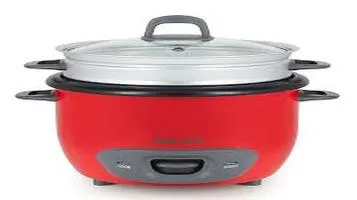Tool Belt Review
A tool belt is a practical accessory designed to provide easy access and organization for tools while working on various projects. Typically made from durable materials like leather, nylon, or canvas, it features multiple pockets, pouches, and loops, each specifically designed to hold different types of tools such as hammers, screwdrivers, pliers, and nails. Worn around the waist, it allows for hands-free mobility and efficiency, enabling workers to carry their essential tools conveniently without the need to constantly return to a toolbox. Tool belts are widely used by carpenters, electricians, construction workers, and DIY enthusiasts alike. They come in various styles and sizes to accommodate different needs, ensuring that all necessary equipment is within arm's reach, enhancing productivity and safety on the job.

When it comes to DIY projects, construction work, or even simple home repairs, having the right tools at your fingertips can make all the difference. Enter the tool belt—a quintessential accessory for anyone serious about their craft. Recently, I had the opportunity to test out several brands and styles of tool belts, and I must say, my perspective on their utility and design has been thoroughly enriched. Here is a comprehensive review based on my experiences.
Introduction to the Tool Belt
A tool belt, at its core, is designed to provide immediate access to essential tools. Traditionally worn around the waist, it often features multiple pouches, loops, and compartments to hold a variety of instruments ranging from hammers and screwdrivers to nails and measuring tapes. The main goal is to enhance efficiency and productivity by minimizing the need to constantly move back and forth to a toolbox.
Material and Build Quality
The first thing to consider when choosing a tool belt is the material. The most common materials are leather, nylon, and canvas, each offering distinct advantages. Leather tool belts are incredibly durable and can withstand harsh conditions, making them ideal for heavy-duty tasks. However, they tend to be more expensive and heavier. Nylon and canvas options, on the other hand, are lighter and often more affordable, but they may not offer the same level of durability.
During my testing, I found that high-quality leather tool belts, such as those from Occidental Leather, provided exceptional longevity and resilience. These belts were well-stitched, with reinforced pockets that could handle the weight of heavier tools without tearing. Nylon and canvas belts, like those from Custom LeatherCraft, were lighter and featured more pouches and compartments, making them versatile and easy to use for lighter tasks.
Comfort and Fit
Comfort is another crucial factor. A tool belt that digs into your waist or causes discomfort can be a significant hindrance, especially during long working hours. Adjustable belts with padded straps offer the best solution for comfort. Brands like DEWALT and Bucket Boss excel in this area, providing adjustable, padded belts that distribute weight evenly and reduce strain on the lower back.
During my usage, I noticed that tool belts with suspenders offered superior comfort. Suspenders help distribute the weight across the shoulders, alleviating the pressure on the waist and hips. Models with this feature, such as those from Gatorback, allowed me to work for extended periods without experiencing discomfort.
Organization and Accessibility
The primary function of a tool belt is to organize tools efficiently. A well-designed tool belt should have a logical layout, with pouches and loops that allow easy access to frequently used tools. I found that belts with a mix of large and small pouches, such as those from ToughBuilt, provided the best organization. The inclusion of specialized compartments for specific tools, like drills or measuring tapes, was a significant plus.
One of the standout features in some models was the modular design, allowing users to customize their tool belt setup. This flexibility is particularly useful for professionals who may need to switch out tools depending on the task at hand. The ability to add or remove pouches and accessories ensured that I could tailor the belt to my specific needs, enhancing both efficiency and ease of use.
Durability and Maintenance
Durability is a key consideration, especially for professionals who rely on their tool belts daily. As mentioned earlier, leather tool belts generally offer superior durability. However, maintenance is also a factor. Leather belts require regular conditioning to prevent cracking and maintain their suppleness. Nylon and canvas belts are easier to clean and maintain but may wear out faster under heavy use.
In my experience, brands like Occidental Leather and Carhartt offered the best of both worlds—durable materials that required minimal maintenance. Regular cleaning and occasional conditioning were sufficient to keep these belts in top condition.
Price and Value for Money
Tool belts come in a wide range of prices, from budget-friendly options to high-end models. While it might be tempting to opt for a cheaper belt, it’s essential to consider the long-term value. High-quality belts, though more expensive initially, often prove to be more cost-effective in the long run due to their durability and superior performance.
For those on a budget, brands like Custom LeatherCraft offer good value for money, providing decent quality at a lower price point. However, for professionals or serious DIY enthusiasts, investing in a premium brand like Occidental Leather or Gatorback can be worthwhile, given the enhanced durability, comfort, and functionality.
Conclusion
In conclusion, a tool belt is an indispensable accessory for anyone engaged in hands-on work. The right tool belt can significantly enhance efficiency, organization, and comfort, making tasks easier and more enjoyable. While the choice of material, design, and brand will depend on individual needs and preferences, it’s clear that investing in a high-quality tool belt can offer substantial long-term benefits. Whether you are a professional tradesperson or a DIY enthusiast, a well-chosen tool belt is a worthy addition to your toolkit.






